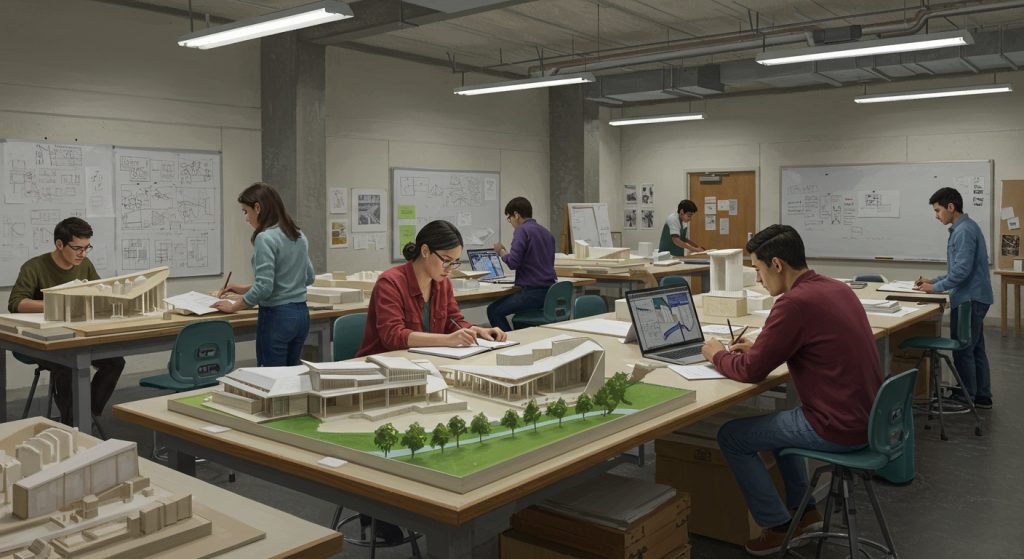Imagine tracing Brunelleschi’s innovative dome in Florence, not just as a tourist. As a design detective, unlocking its structural secrets. Italy’s architectural heritage, a living textbook of innovation, offers unparalleled learning experiences. This exploration delves into immersive programs designed for design enthusiasts seeking more than surface-level appreciation. Discover how hands-on workshops in Rome, coupled with contextual analyses of Venetian urban planning, foster critical thinking and creative problem-solving. Explore unique curricula blending historical precedent with contemporary design challenges, guided by leading architects and historians. Prepare to transform your understanding of architecture, gaining practical skills and a deeper connection to Italy’s enduring design legacy.
Program Overview and Rankings
Italy boasts a rich architectural heritage, from the Roman Colosseum to Renaissance masterpieces and contemporary designs. This history, combined with forward-thinking design principles, makes it a prime destination for aspiring architects. Several institutions stand out for their comprehensive programs and contributions to the field. Politecnico di Milano and Politecnico di Torino consistently rank high in global architecture rankings, offering a blend of theoretical knowledge and practical application. These programs are often accredited by international organizations, ensuring a high standard of education. Smaller, specialized academies also provide unique learning experiences, focusing on specific design philosophies or regional architectural styles. Consider the Domus Academy for innovative design approaches or the Florence Institute of Design International (FIDI) for a focus on Italian craftsmanship.Admission Requirements and Process
Gaining admission to a leading architecture program in Italy requires careful preparation and a strong portfolio. Academic prerequisites typically include a high school diploma or equivalent, with strong performance in mathematics, physics. Art-related subjects. Language proficiency is essential; most programs require a good command of Italian or English, depending on the language of instruction. Non-native speakers may need to provide proof of language proficiency through standardized tests like the IELTS or TOEFL for English or the CELI or CILS for Italian. The application process usually involves submitting transcripts, a personal statement outlining your motivations and aspirations, letters of recommendation from teachers or mentors. A portfolio showcasing your design skills and creative potential. Some universities also require an entrance exam or interview to assess your aptitude and suitability for the program. The selection criteria often prioritize creativity, problem-solving abilities. A genuine passion for architecture.Program Structure and Curriculum
Architecture programs in Italy are structured to provide a holistic education, encompassing both theoretical knowledge and practical skills. The curriculum typically includes core courses in architectural history, design theory, structural engineering, urban planning. Building technology. Students often specialize in areas such as sustainable design, restoration, or urban design during their later years of study. The duration of a bachelor’s degree in architecture is generally three years, followed by a two-year master’s degree for those seeking advanced knowledge and professional accreditation. Teaching methodologies vary. Often involve a combination of lectures, studio work, workshops. Field trips to significant architectural sites. Many programs have strong industry partnerships, offering students opportunities for internships and collaborative projects with leading architectural firms. Research opportunities are also available, allowing students to explore specific areas of interest and contribute to the advancement of architectural knowledge.Career Prospects and Alumni Success
Graduating from a leading architecture program in Italy opens doors to a wide range of career opportunities both domestically and internationally. Industry connections are often strong, with many programs maintaining close relationships with architectural firms, design studios. Construction companies. Placement statistics for graduates are generally positive, reflecting the high demand for skilled architects in the global market. Notable alumni achievements can serve as inspiration, showcasing the potential for success in various architectural fields. Career support services, such as career counseling, resume workshops. Networking events, are often provided to help students transition from academia to professional practice. Global employment opportunities abound, as Italian-trained architects are highly regarded for their design expertise, technical skills. Cultural sensitivity. Students can pursue careers in architectural design, urban planning, landscape architecture, historic preservation. Project management. Italian architectural firms are known for their innovative and sustainable designs, making graduates highly sought after in the international market. Considering how interconnected global architecture is, look to programs offering design opportunities for international architecture like those found at Best Colleges for Architecture in the United States.Student Life and Support
- Campus Facilities: Italian universities often offer a range of campus facilities, including well-equipped design studios, libraries with extensive architectural resources, computer labs with specialized software. Model-making workshops.
- Student Organizations: Joining student organizations related to architecture can enhance your learning experience and provide networking opportunities. These organizations often host guest lectures, workshops. Social events.
- International Student Support: Universities typically have dedicated international student support offices that provide assistance with visa applications, housing arrangements, language support. Cultural integration.
- Housing Options: Housing options vary, ranging from university dormitories to private apartments. It’s advisable to research and secure housing well in advance of your arrival.
- Cultural Integration Programs: Cultural integration programs, such as language classes, cultural excursions. Mentorship programs, can help international students adapt to life in Italy and connect with local students.
Conclusion
The immersive experience of leading architecture programs in Italy is not merely about absorbing historical knowledge; it’s about fostering a design philosophy. Drawing inspiration from the masters, you’ll learn to synthesize tradition with innovation. Common pitfalls involve getting lost in imitation rather than developing a personal style. The key is to use Italian architecture as a springboard, not a constraint. As you embark on this journey, remember that the most impactful designs often arise from a deep understanding of the human experience. Visit contemporary projects, engage with local artisans. Challenge your preconceived notions of space and form. My personal insight? Don’t be afraid to experiment. The Italian design landscape is constantly evolving, embracing sustainable practices and digital technologies. By embracing these trends, you’ll not only enrich your design skills but also contribute to the future of architecture. Cultivating a global perspective is essential to thrive in this field. Success metrics aren’t just about awards and recognition; they’re about creating spaces that enhance lives and leave a lasting legacy. Your journey starts now, fueled by passion, informed by knowledge. Driven by a desire to make a difference.FAQs
So, I’m thinking about studying architecture in Italy. What’s the big deal? Why Italy?
Italy! Think history, art, design innovation – it’s all there! You’re practically walking through a living architecture museum. Plus, Italian schools often emphasize a holistic approach, blending theory with hands-on experience. It’s not just about drafting plans; it’s about understanding the why behind them.
Okay, sounds cool. But are these programs taught in English? My Italian is, uh, limited to ordering pizza.
Good news! Many Italian architecture programs, especially at the Masters level, are offered in English. Do your research, because some might require a basic level of Italian. Plenty cater to international students. Don’t let the language barrier scare you!
What kind of portfolio do I need to impress them? What are they looking for?
Think quality over quantity. They’re not just looking for pretty pictures. Show your design process – sketches, models, prototypes – the whole journey. Include diverse projects that showcase your creativity, technical skills. Problem-solving abilities. And tailor it to each program; some might have specific requirements or preferences.
What are some of the top-tier architecture programs in Italy? Give me some names!
You’ve got Politecnico di Milano, Politecnico di Torino. IUAV University of Venice consistently ranking high. But don’t just look at rankings! Consider program specializations, faculty expertise. The overall vibe of the city itself. Rome, Florence, Milan – each offers a unique architectural context.
What’s the difference between a Laurea Triennale and a Laurea Magistrale? Is it like a Bachelor’s and Master’s?
Exactly! Laurea Triennale is your Bachelor’s degree (usually 3 years). Laurea Magistrale is your Master’s (typically 2 years). For architecture, you generally need both to become a licensed architect in Italy (and many other places).
And after graduation? What kind of job opportunities are out there for architects trained in Italy?
A degree from an Italian architecture program can open doors worldwide. You could work in architectural firms (big or small), urban planning, historical preservation, interior design, or even academia. Italy itself has a thriving design scene. You’re definitely not limited to staying there!
What about the cost? Is studying architecture in Italy going to break the bank?
Tuition fees vary widely depending on the university (public vs. Private) and your nationality. Public universities are generally more affordable, especially if you’re an EU citizen. Look into scholarships and financial aid opportunities! Living expenses can also vary depending on the city. Milan is pricier than, say, a smaller town. Budget wisely!



